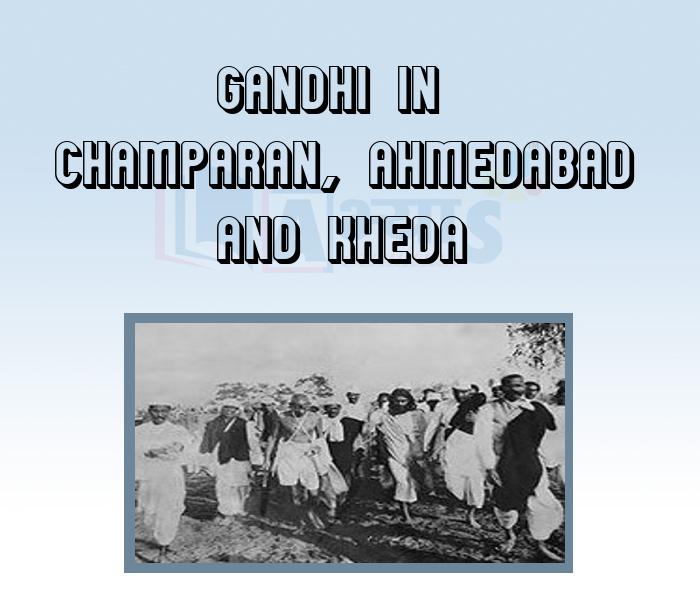Gandhi in Champaran, Ahmedabad and Kheda


Gandhi in Champaran, Ahmedabad and Kheda
Gandhi's Initial Phase in the National Movement
(A) Champaran Peasant Movement
The story of Champaran (Bihar) begins in the early 19th century when European planters had involved the cultivators in agreements that forced them to cultivate indigo in 3/20th of their holdings (Tin-Kathia). However, when indigo became remunerative, the European planters imposed higher taxes to compensate their losses in the international trade at that lime. Gandhi (in July 1917) was successful in abolishing the Tin-Kathia system and refund was made to the cultivators in wages.
Gandhi undertook his first hunger strike at Ahmedabad in ________________ for the mill wage bike of workers. | |||
| Right Option : B | |||
| View Explanation | |||
In___________________________ , in March 1918 a dispute started between the mill workers and the mill owners regarding the plague bonus. | |||
| Right Option : C | |||
| View Explanation | |||
Which of the following are correct : (a) Gandhi undertook his first hunger strike at Ahmedabad (1918) for the mill wage of workers. (b) Mahatma Gandhi first Civil Disobedience movement was the Champaran Satyagraha. | |||
| Right Option : C | |||
| View Explanation | |||
Students / Parents Reviews [10]
My experience was very good with Abhyas academy. I am studying here from 6th class and I am satisfied by its results in my life. I improved a lot here ahead of school syllabus.

Ayan Ghosh
8thIt was good as the experience because as we had come here we had been improved in a such envirnment created here.Extra is taught which is beneficial for future.

Eshan Arora
8thAbout Abhyas metholodology the teachers are very nice and hardworking toward students.The Centre Head Mrs Anu Sethi is also a brilliant teacher.Abhyas has taught me how to overcome problems and has always taken my doubts and suppoeted me.

Shreya Shrivastava
8thMy experience with Abhyas academy is very good. I did not think that my every subject coming here will be so strong. The main thing is that the online tests had made me learn here more things.

Hiya Gupta
8thIt has a great methodology. Students here can get analysis to their test quickly.We can learn easily through PPTs and the testing methods are good. We know that where we have to practice

Barkha Arora
10thAbhyas is a complete education Institute. Here extreme care is taken by teacher with the help of regular exam. Extra classes also conducted by the institute, if the student is weak.

Om Umang
10thAbhyas Methodology is very good. It is based on according to student and each child manages accordingly to its properly. Methodology has improved the abilities of students to shine them in future.

Manish Kumar
10thMy experience with Abhyas is very good. I have learnt many things here like vedic maths and reasoning also. Teachers here first take our doubts and then there are assignments to verify our weak points.

Shivam Rana
7thBeing a parent, I saw my daughter improvement in her studies by seeing a good result in all day to day compititive exam TMO, NSO, IEO etc and as well as studies. I have got a fruitful result from my daughter.

Prisha Gupta
8thIt was a good experience with Abhyas Academy. I even faced problems in starting but slowly and steadily overcomed. Especially reasoning classes helped me a lot.
